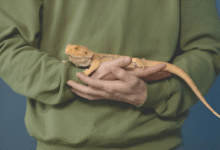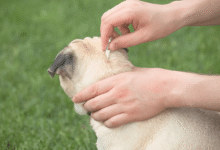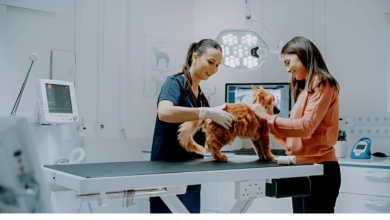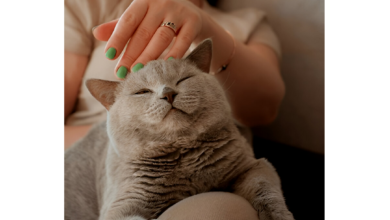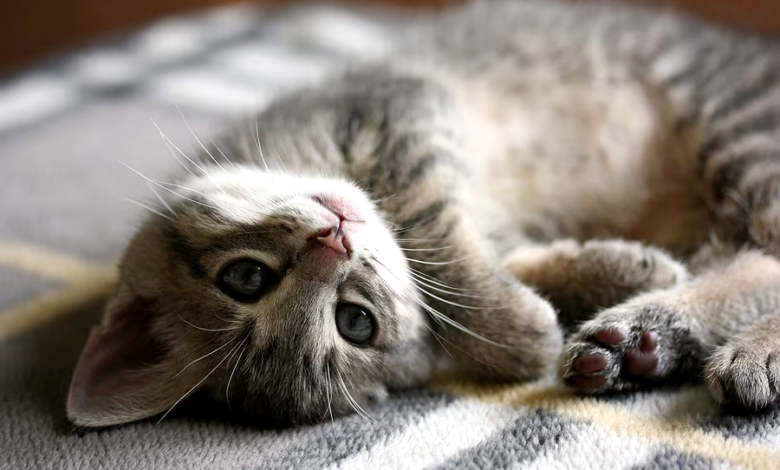
Calm Your Cat with These 5 Vet-Approved Tips
Anxiety in cats is well-known to the majority of pet owners, but what about our feline friends? Similar to dogs, cats can experience separation anxiety, generalized anxiety, or anxiety provoked by specific events such as thunderstorms, new family members, or relocation.
Anxiety manifests itself in a variety of ways in cats, including urine marking, recurrent urinary tract disorders (FLUTD), excessive grooming, and other compulsive behaviors.
If the change in behavior is sudden and unexplained, consult your veterinarian to rule out any underlying health conditions. Otherwise, continue reading to discover five methods suggested by veterinarians to calm your cat.
Tips to Calm Your Cats
1. Create a Calm Environment
You can create a calm environment for your cat in advance if certain events, such as fireworks displays or family gatherings, stress them out. Consider it your cat’s private sanctuary!
The natural behaviors of outdoor cats are maintained in indoor cats, including scratching, chewing, foraging, playing, and climbing. A calming environment for cats encourages these natural behaviors and is free from potential dangers such as canines and children’s grasping hands. Consider using a gate to prevent dogs and children from entering the cat’s safe territory.
Cats appreciate ascending to vantage points from which they can survey their environment. By providing cat trees, window perches, and elevated beds, you enrich your cat’s environment.
Cats also favor sleeping in warm environments. Furnishing your cat with self-heating beds and beds in sunny areas can help her feel at ease. Be mindful of the dangers of electrical cords when using heated beds, particularly if your cat has a propensity for chewing.
Include clawing posts for your cat’s claw maintenance. Scratching is essential for claw health and allows cats to designate their territory. Typically, cats scratch in conspicuous vertical spaces close to where they sleep. You can provide both horizontal and vertical scratching surfaces, but you may want to place a tall scratching post near their bed.
If your cat is having daily anxiety, is regularly triggered by the same stimulus, or has more than one episode of anxiety per month, schedule an appointment with your vet.
To encourage natural hunting and playing behaviors, the secure space should also contain engaging toys. You can purchase crinkle balls that make pleasant crunching sounds, automated devices that resemble prey, or even cardboard boxes with toilet paper roll cores to bat around. Some cats have “favorite” toys, so identifying what your cat enjoys is a wonderful way to create a relaxing environment for your cat.
Consider your cat’s sense of scent at all times. Stimulating aromas, such as catnip, calm a nervous cat. You can use catnip toys or scatter catnip in the area where your cat relaxes. Another great way to engage your cat’s sense of smell is to conceal treats.
If you only place your cat in this area during stressful situations, they may associate it with their triggers. This area should be accessible to calm your cat, even in non-stressful cases. Ensure that they have access to water, food (unless they are on a timed feeding schedule), and a litter receptacle.
2. Put On Soft Music or White Noise
We often think of classical music when we think of relaxing music. Cat music lowers a cat’s level of anxiety. The frequencies and tempos of cat music are within their audible range and are comparable to those of their natural communication. If you intend to use music to reduce your cat’s anxiety, you should consider purchasing a speaker that plays cat-specific music.
In some instances, you may use music or a white noise machine to mask out loud sounds that cause your cat anxiety. Keep in mind that while this may mask the sound for you, your cat will likely still hear it. If a white noise machine is too noisy or emits sounds that a cat finds unpleasant, the noise may increase their anxiety.
Read: How to Read a Dog’s Body Language
3. Make Time for Play and Interaction
Playing with your cat allows them to exhibit natural behaviors, which is beneficial to their mental health.
The following toys encourage cats to engage in foraging and play behaviors:
- Wand games
- Toys with motorized propulsion that mimic prey
- illuminating insights
- Puzzle games
- Clicking toys
- Boxes of cardboard containing the innards of toilet paper rolls
If your cat dislikes playtime but appreciates human interaction, consider grooming sessions as an alternative to playtime.
Ensure that you only interact with your cat immediately prior to their trigger. If there is always something unpleasant after playtime, intelligent felines will lose interest in it.
4. Use Over-The-Counter (OTC) Calming Products
Without requiring a prescription from a veterinarian, over-the-counter (OTC) products can also be used to treat your cat’s anxiety. Before adding supplements to your cat’s diet, however, it is essential to consult with your veterinarian. Your veterinarian can also help you determine the optimal option for your cat’s health.
Some over-the-counter (OTC) products contain pheromones, which are species-specific chemical signals that can induce a feeling of security. Several examples include:
- Feliway spray
- Feliway diffusers include:
- Feliway Classic
- Feliway Optimum
- Feliway Multicat
- Calming wipes
- Calming collars
In addition, nutraceuticals and supplements reduce the apprehensive behaviors of cats. Nutraceuticals are substances derived from food that may affect health but are unregulated by the FDA.
5. Discuss Anxiety Medications With Your Veterinarian
Make an appointment with your veterinarian if your cat has frequent episodes of anxiety, daily anxiety, more than one episode per month, or if their stress is interfering with your family’s life. In certain instances, they may recommend anti-anxiety medication.
There are two categories of anti-anxiety medications: long-term medications used for daily anxiety and short-term medications used for phobias or anxiety-inducing incidents.
The following medications are frequently prescribed for daily or generalized anxiety:
- Fluoxetine
- Paroxetine
- Sertraline
- Amitriptyline
- Clomipramine
- Buspirone
Medications often prescribed for short-term uses or triggering events include:
- Gabapentin
- Trazodone
- Alprazolam
- Lorazepam
- Oxazepam
Consult with your veterinarian regarding the dosage and administration schedule of any prescription medication. Never abruptly discontinue a medication; consult your veterinarian if you need to stop a remedy for any reason.
Keep in mind that this list is not exhaustive, so if your veterinarian suggests a different medication, do not be afraid to attempt it. It may take some experimentation with your veterinarian to determine the most effective treatment for your cat’s anxiety.
